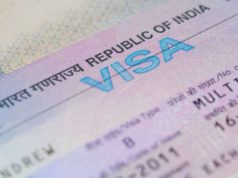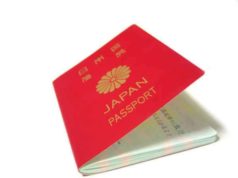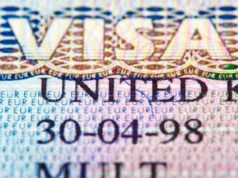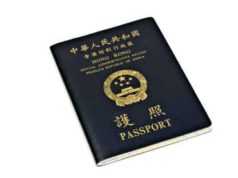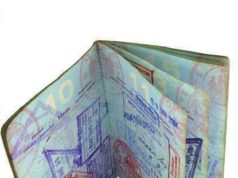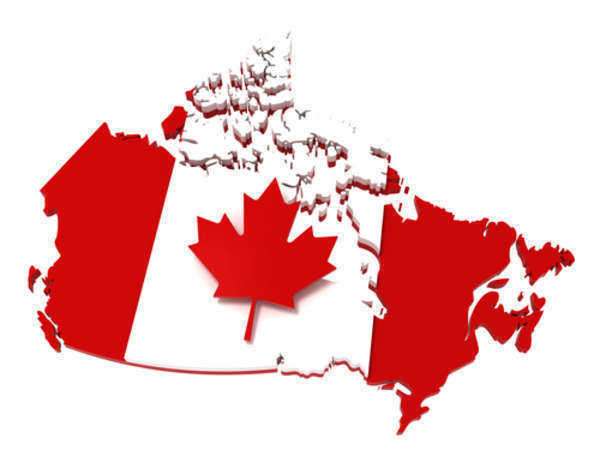
Visas to Canada: Everything You Need to Know
Canada has become a popular destination for those looking to travel or relocate to a new country. But before you pack your bags and book your flight, it’s important to understand the various types of visas available, as well as the requirements and processes for obtaining them.
In this article, we’ll explore the different types of visas to Canada, the eligibility criteria for each, and the steps involved in applying for them. We’ll also highlight recent updates and changes to Canadian immigration law, providing you with the most up-to-date information available.
Types of Visas to Canada
There are several types of visas available to those looking to enter Canada, including temporary resident visas, permanent resident visas, and immigration programs. Let’s take a closer look at each of these options.
Temporary Resident Visas
A temporary resident visa (TRV) is a visa that allows you to visit Canada for a specific period of time, usually up to six months. TRVs are also known as visitor visas and are typically issued for tourism, business, or medical purposes.
The eligibility criteria for a TRV may vary depending on the purpose of your visit and your country of citizenship. In general, however, you’ll need to provide the following information when applying for a TRV:
– A valid passport
– Proof of financial support
– A letter of invitation (if applicable)
– A completed application form
– A processing fee
Permanent Resident Visas
A permanent resident visa (PRV) is a visa that allows you to live and work in Canada permanently. There are several pathways to obtaining a PRV, including family sponsorship, economic immigration, and refugee and humanitarian programs.
One popular form of economic immigration is the Express Entry system. This program is designed to fast-track the PRV application process for skilled workers who meet specific criteria, such as age, education, language proficiency, and work experience.
Regardless of the pathway you choose, the eligibility criteria for a PRV will depend on several factors, including your age, education, work experience, language proficiency, and criminal record. You’ll need to provide a range of supporting documents, such as proof of education, language test results, and police certificates.
Immigration Programs
In addition to TRVs and PRVs, there are several immigration programs available to those hoping to move permanently to Canada. These programs include:
– Family sponsorship: Allows Canadian citizens and permanent residents to sponsor their family members to come to Canada as permanent residents.
– Economic immigration: Includes programs such as the Federal Skilled Worker Program, the Federal Skilled Trades Program, and the Canadian Experience Class, which are designed to attract skilled workers to Canada.
– Refugee and humanitarian programs: Provide support to refugees, asylum seekers, and other vulnerable populations seeking protection in Canada.
The eligibility criteria for each of these programs varies, depending on the specific program and the individual’s circumstances. In general, however, applicants will need to provide supporting documents to demonstrate their eligibility, such as proof of work experience or education credentials.
Updates to Canadian Immigration Law
In recent years, the Canadian government has made several updates and changes to its immigration laws and policies. These updates have had a significant impact on visa applications and eligibility criteria. Let’s take a look at some of the most recent changes.
COVID-19 Travel Restrictions
Since March 2020, Canada has imposed strict travel restrictions in response to the COVID-19 pandemic. These restrictions have limited the number of people allowed to enter Canada and required those who do enter to follow strict quarantine protocols.
As of February 2021, travelers must provide a negative COVID-19 test result taken within 72 hours of their departure to Canada. They must also undergo a mandatory quarantine for 14 days upon arrival, with several restrictions on their movement and activities.
IRCC Service Disruptions
Due to the pandemic, the Immigration, Refugee and Citizenship Canada (IRCC) has experienced substantial backlogs and service disruptions, leading to significant delays in visa processing times.
To address this issue, the Canadian government has allocated additional funding to the IRCC and launched new initiatives, such as the Multi-Year Immigration Levels Plan, to increase the number of immigrants Canada can welcome to the country. However, applicants should still expect delays in the application process.
Express Entry System Updates
In 2020, the Canadian government made several updates to the Express Entry system, including new scoring criteria and program requirements.
For example, the government introduced a new policy giving more points to candidates with siblings in Canada and increased the number of points awarded for French language proficiency. The government also updated the list of eligible occupations for the program, adding new technology-related roles.
To ensure that you have the most up-to-date information on the requirements and processes for obtaining a Canadian visa, it’s important to regularly check government websites, such as the IRCC and the Government of Canada website.
Steps to Apply for a Canadian Visa
Now that you understand the different types of visas available and recent updates to Canadian immigration policy, let’s take a closer look at the steps involved in applying for a Canadian visa.
Step 1: Determine Your Eligibility
Before applying for a visa, you’ll need to determine which type of visa you’re eligible for and what documents you’ll need to provide. The eligibility criteria may vary depending on the type of visa and your individual circumstances.
Step 2: Gather the Required Documents
Once you’ve determined your eligibility, you’ll need to gather the required documents, such as a passport, police certificates, or language test results. You’ll also need to prepare any additional documentation, such as a letter of invitation or proof of financial support.
Step 3: Complete the Application Form
After gathering all of the necessary documents, you’ll need to complete the application form, providing accurate and complete information. Make sure to review your application carefully before submitting it.
Step 4: Pay the Required Fees
You’ll need to pay the required fees for your visa application. The fee may vary depending on the type of visa and your country of citizenship.
Step 5: Submit Your Application
After completing the application and paying the fees, you’ll need to submit your application. Depending on the type of visa, you may need to submit your application online, in person, or by mail.
Step 6: Await Processing
Once you’ve submitted your application, you’ll need to await processing by the IRCC. Depending on the type of visa and your individual circumstances, the processing time may vary.
Conclusion
Obtaining a Canadian visa can be a complex and time-consuming process. However, by understanding the different types of visas available, the eligibility criteria for each, and the steps involved in applying, you can increase your chances of a successful application.
Keep in mind that Canadian immigration policy is constantly evolving, so it’s important to stay up-to-date on the latest updates and changes. By doing so, you can better prepare yourself for a smooth and successful transition to life in Canada.
Given the wide variety of reasons that are usually available to foreign applicants for their transportation into another jurisdiction and even past precedent for American migration into neighboring territories, it might be assumed that visiting Canada from the United States is an automatic process, requiring approval by the Royal Canadian Mounted Police at customs that no dangerous materials are on board and nothing more. Some may still believe that a U.S. passportis not even necessary, let alone a Canadian visa.
After all, concerning a visitor visa to the United Kingdom, the need for such documentation may be waived for short-term stays in the nation’s boundaries by American citizens and nationals. By this example of eliminating a visa, Canada might be logically construed to bypass visa restrictions for residents of its neighbor to the south in all instances. Going back to the idea of the breadth of visas, though, to be certain, not all Americans (or residents of other countries) may be looking for a few days or weeks on Canadian soil.
Instead, especially if looking for work, a foreign applicant may have to seek a Canadian visa. As the United States has dignified the Department of State as the official entity for the processing of each visa, Canada does have its own bureau to handle immigration issues, the Department of Citizenship and Immigration Canada, or CIC.
Like most countries that will issue you a visa, Canada has restrictions that will vary based on the purpose of your temporary or extended stay in the nation. Going back to the United States/Canada binary, as an American travel visa is generally not needed for Canadian nationals, a Canadian visa is not needed for travel, at the least for the term of stay specified on your visa’s arrival/departure record. Likewise, the Canadian visa application process may be a non-issue for refugees. While Australia addresses claims to asylum in writing with the physical creation of a temporary visa, Canada is more like the United States in simply granting refugee status.
Nevertheless, the country’s government does acknowledge special categories of applicants, and this is where the uniqueness of the Canadian visa program is exposed. One such class of working visa that separates Canada is the Canadian Experience Class, which very narrowly applies to individuals with work experience following a course of study in a post-secondary institution.
Also, given the idea that the country is divided into separate “provinces,” to earn a visa, Canada or a representative thereof may offer you documentation as nominee of a particular province. In addition, Quebec, which has its own separatist sensibilities in terms of relation to the rest of Canada, makes it own rules, so the acquisition of a visa is subject to their individual immigration policies, hence the need for a certificate of selection from the powers-that-be in Quebec.


